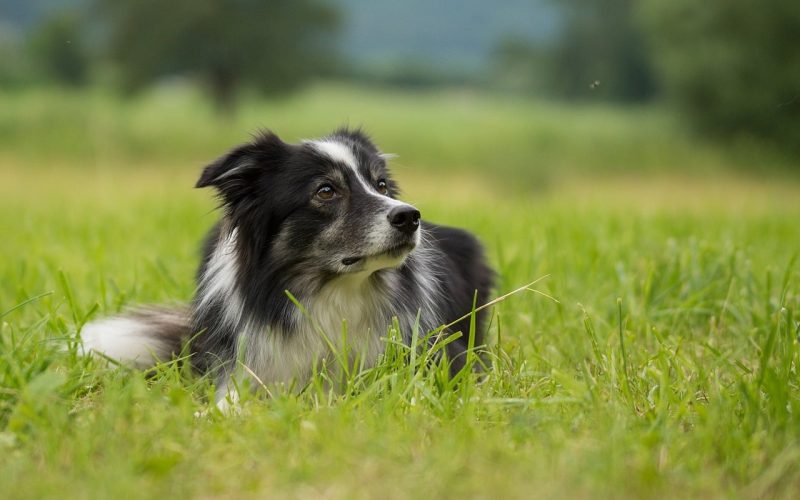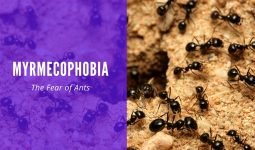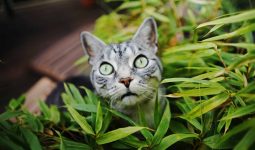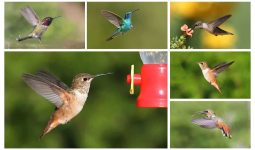Various flies are attracted to dogs, from biting flies to houseflies, and if left unaddressed, some can be dangerous for your pet to have around.
All types of dogs, big and small alike, are susceptible to the presence of flies on dogs.
It doesn’t matter if your dog has coarse fur or short hair – these pesky creatures seem to thrive equally well on either one, which means that you can never let your guard down when it comes to the types of flies on dogs.
Below are the most common types of flies on dogs and what you can do about them
1. Houseflies
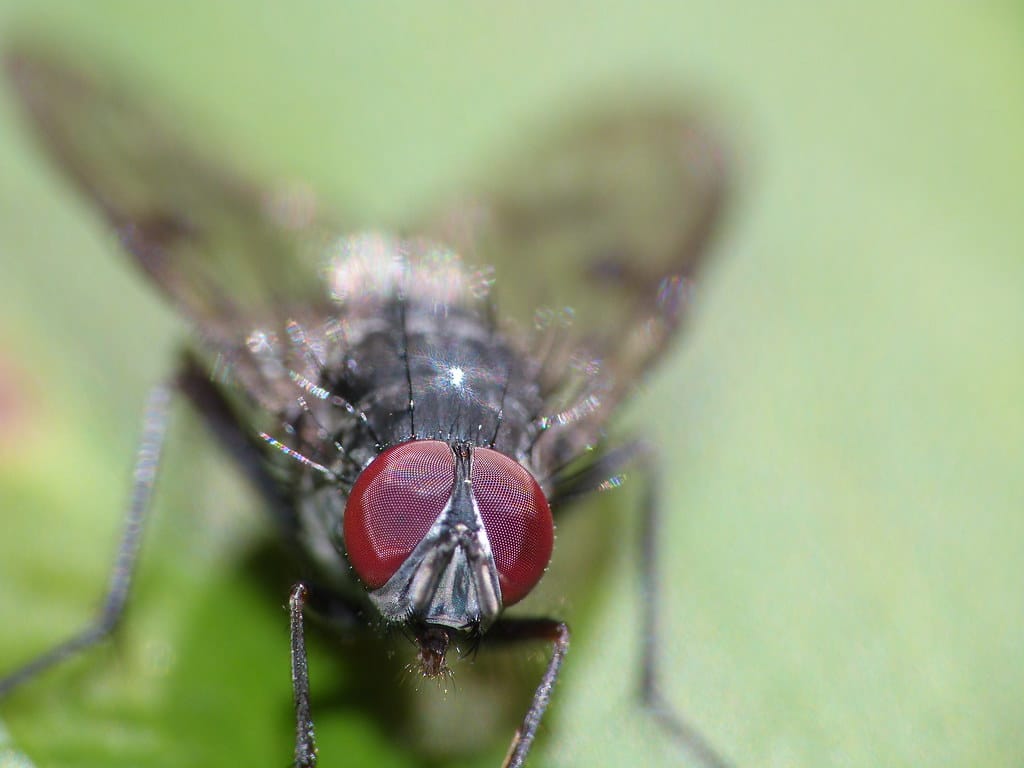
A member of the fly suborder Cyclorrhapha is the housefly. The adults are grey and black with dark, prominent compound eyes on their heads, three ocelli (eyespots) at the top for orientation, and six jointed legs for walking.
Females also have an ovipositor to lay eggs in manure or other material where larvae can feed on it.
Houseflies may live indoors, where they breed near sources of food or moisture. They breed all year round, meaning their lifespan is over a year.
They like wet environments and dark spaces, preferring to lay eggs near damp areas such as decaying plant matter.
Houseflies can be pests due to their habit of feeding on substances humans want to stay clean, such as food residue and rotting fruit.
Houseflies are found worldwide; however, they are most common in warmer regions since this helps them reproduce faster.
These types of flies on dogs are often found around areas where there is likely to be decaying organic matter present.
For example, dog owners might encounter houseflies on their dogs because these flies prefer warm climates and decomposing materials.
2. Flesh Flies
There are many types of flies on dogs, but the most common is the flesh fly. The larvae of a flesh fly are often found in decaying animal and vegetable matter.
If you see small black or brown flies that resemble mosquitoes near your dog, you likely have a flesh fly infestation.
The best way to kill these types of flies on dogs is by using a pesticide containing permethrin to spray areas where they breed and hideouts, such as cracks and crevices, window sills, doorways, baseboards, trash cans, etc., then wipe up any residue with a damp cloth.
If you’re unsure if it’s a flesh fly or another type of insect, try spraying it with water – if it flies away, it’s not a flesh fly.
3. Blowflies
These types of flies on dogs also prefer carcasses as food sources, so they may be a more likely suspect for finding one on your pup than other fly species, such as houseflies or mosquitoes.
Blow flies can lay up to 500 eggs at a time and are the fastest type of fly, with the ability to move up to 15 miles per hour.
Blowflies on dogs, thankfully, only live about 5-10 days and typically do not bite humans, but it’s possible that if they come in contact with your skin while feeding, they will stick around to lay their eggs there too!
4. Stable Flies
The stable fly is called the Horse Fly because it primarily feeds on horse blood.
A Stable fly will typically find a host by landing close to one and then waiting for an opportunity to pounce on them.
Horses often fend off these flies with their tails, but dogs are less likely to do so.
These flies feed on various animals, including humans, birds, reptiles, and other mammals, such as dogs or cats.
The first few days after being bitten by a stable fly can be painful and itchy, resulting in localized swelling or redness.
Stable flies also produce saliva when biting, which can cause allergic reactions.
There are two types of stable flies: Tabanidae (also known as deer flies) and Muscidae (also known as houseflies).
Horse flies are yellowish-brown in color with a large head and green eyes. They bite and feed on blood and other fluids from the host.
Deer flies are brown or black, with a distinctive white spot at the end of the tail. These types of flies can be found from north to south during different times of the year.
Deer flies are especially common in New England states during late summer and early fall, where they may inflict over 5000 bites per day on their host.
In addition, female deer fly bites cause allergic reactions that make human skin itch intensely.
Horse flies have been known to transmit equine infectious anemia virus to livestock, but these types of flies on dogs do not cause significant damage to humans, which is why they are not considered public health pests.
5. The Biting Midge
These types of flies on dogs are attracted to dogs with short coats and may be seen around the muzzle and eyes, ears, armpits, groin area, and underside of the animal’s legs.
When these tiny flies bite a dog, they irritate like mosquito bites which may result in hair loss from scratching or open wounds if scratched too much by the animal.
There is also some evidence that the canine herpes virus can increase the risk of midge infestation.
Owners should take their pets to the vet if they see any signs of this fly type on their animals as soon as possible.
6. The Black Horsefly
Black horse-flies are often found on dogs. They are usually about one to two inches long and have a yellowish body with black stripes on the abdomen.
These flies feed on other animals, so they will not bite humans unless they feel threatened.
These types of flies live in moist areas and prefer wooded or swampy areas. This fly will attach its eggs to the fur or skin of the animal they feed on, which is why they’re often seen on dogs.
The adults can lay up to 100 eggs at a time, which will hatch within 10-20 days, depending on the temperature and humidity levels.
7. Bot Flies
While flies on dogs are often a nuisance, there are types of flies on dogs that can cause serious health problems.
Bot flies, for example, lay their eggs on the dog’s skin or fur. When these eggs hatch, the larvae burrow under the dog’s skin to feed and grow.
They can be very painful and lead to abscesses and secondary infections if left untreated.
Humans should not handle these types of flies on dogs. Thankfully, as long as they remain at bay and undisturbed, they do not pose a major threat to your pet’s well-being.
When researching types of flies on dogs, you may also find them referred to as warble flies or gadflies.
8. Black Soldier Flies
This type of fly prefers animal manure to feed on and is not commonly found around your home or dog’s fur.
However, they can be found in rotten meat, so if you find one on your pet, it could have crawled from elsewhere!
These flies come in different colors, with black being the most prevalent.
The adults grow up to 1/2 inch long, while the larvae are smaller at 1/8 inch. Their eggs hatch into more larvae that eat more feces until they turn into adult flies.
Black soldier flies may bite people but do not seem interested in dogs or cats.
They also lay eggs directly on the skin rather than near feces, where other types of flies on dogs would place them for their young to eat once hatched.
Dealing With Fly Problems on Your Dog
It’s no fun to deal with flies on your dog. However, you can do a few things that will help control the situation.
First, ensure your dog is on a regular schedule for grooming and bathing. This will eliminate all the food sources from their coat and eliminate any manure they’ve collected while walking around.
Second, take extra care to clean up any feces immediately so flies don’t have a chance to lay eggs in it.
Third, consider using fly repellent on the most fly-prone areas of your dog’s body – such as the belly and underarms.
Finally, keep an eye out for fresh droppings, which might indicate parasites or intestinal issues that could make your pup more susceptible to fly bites!
Conclusion
There are many types of flies on dogs, including botflies, horseflies, and deer flies. Not all flies on dogs are dangerous for humans or pets.
Some flies may be a nuisance but not dangerous to your dog’s health.
However, you should always have your pet checked by a veterinarian if they have an unknown fly bite or wound that is not healing as it should be.




